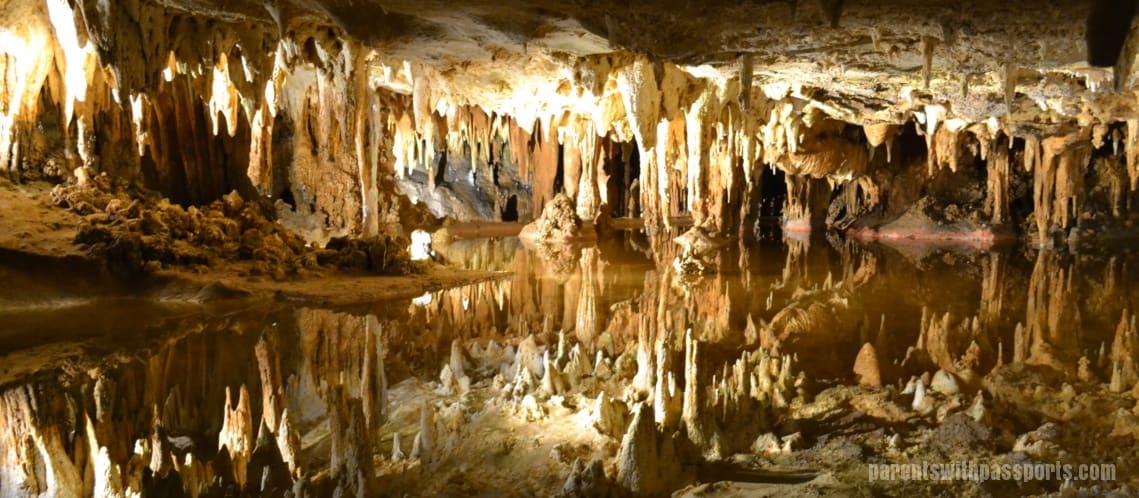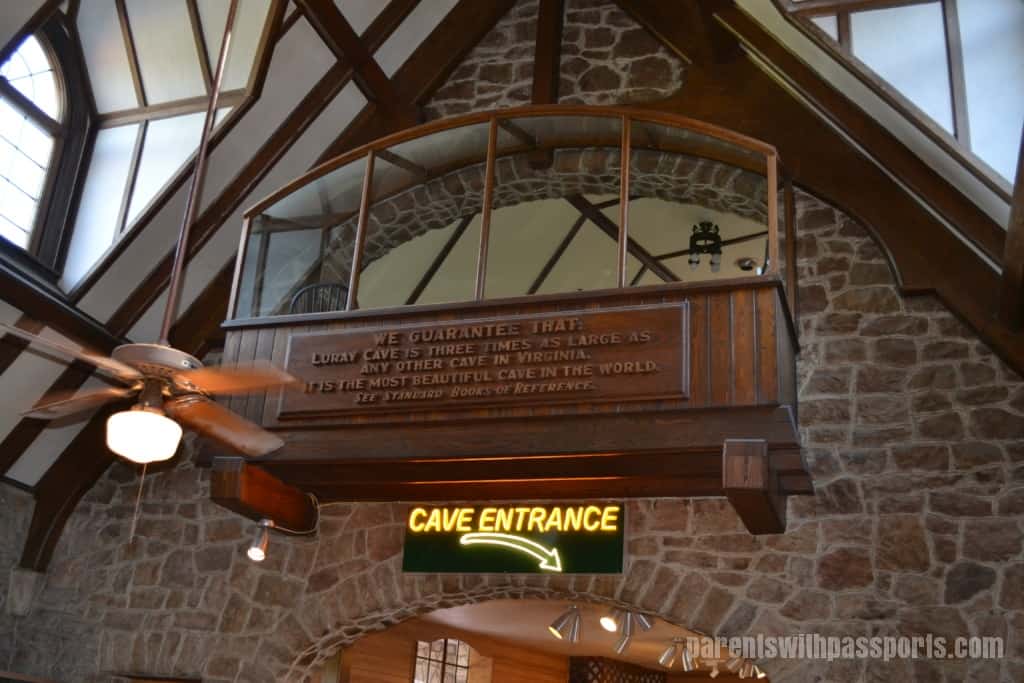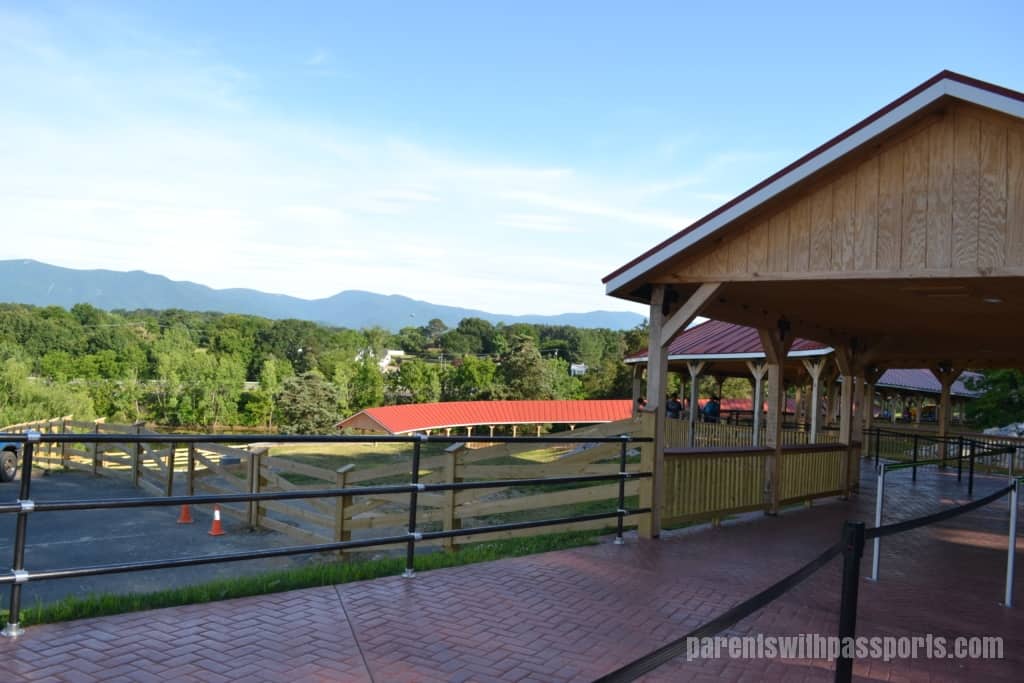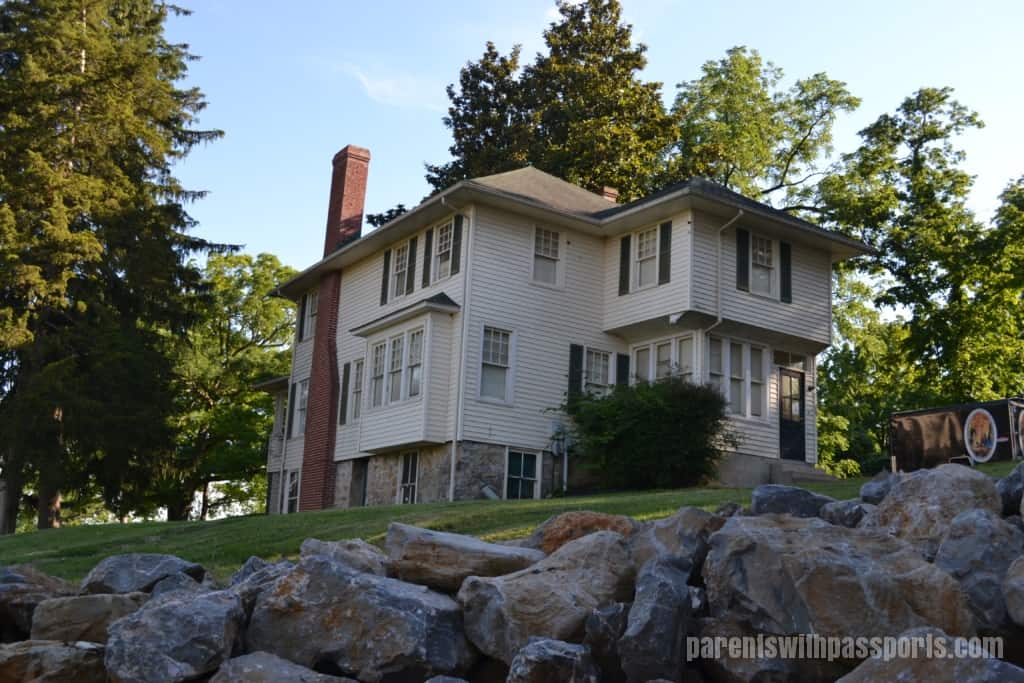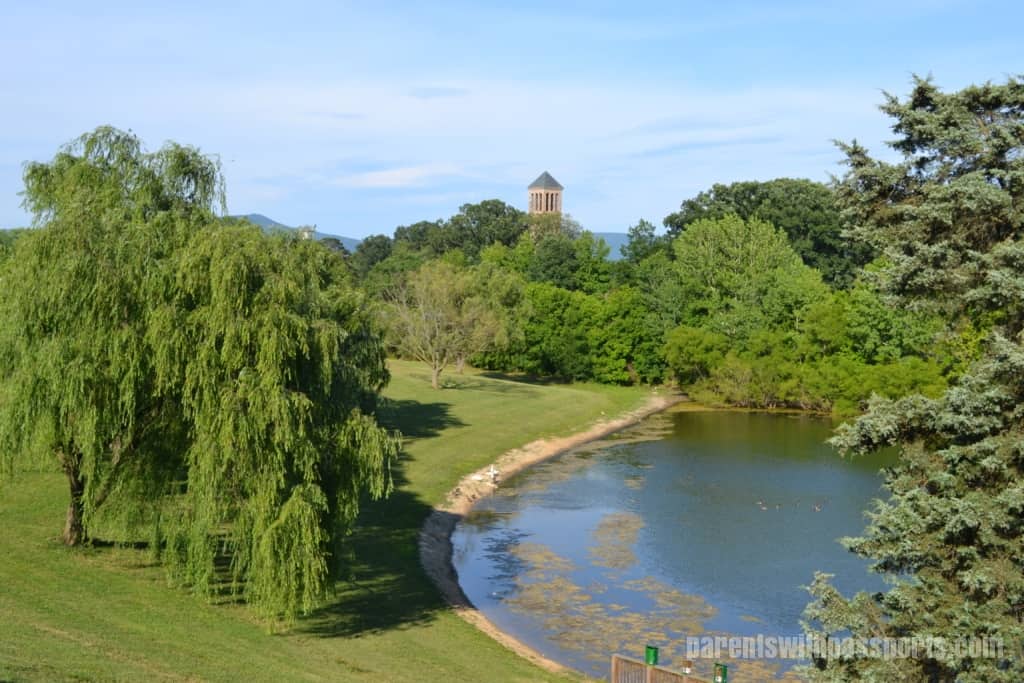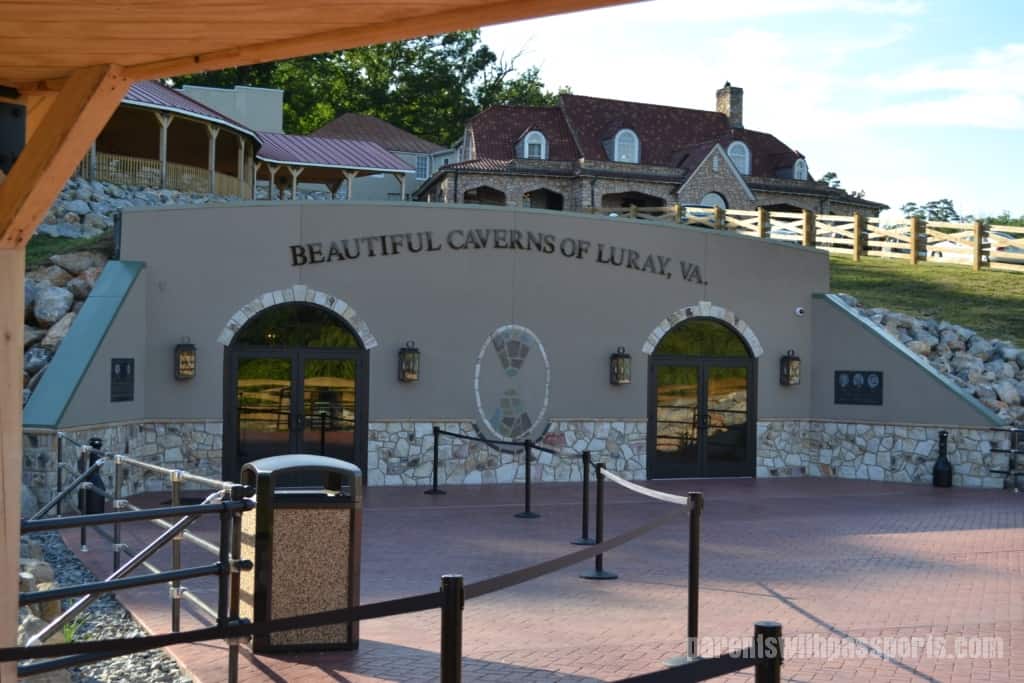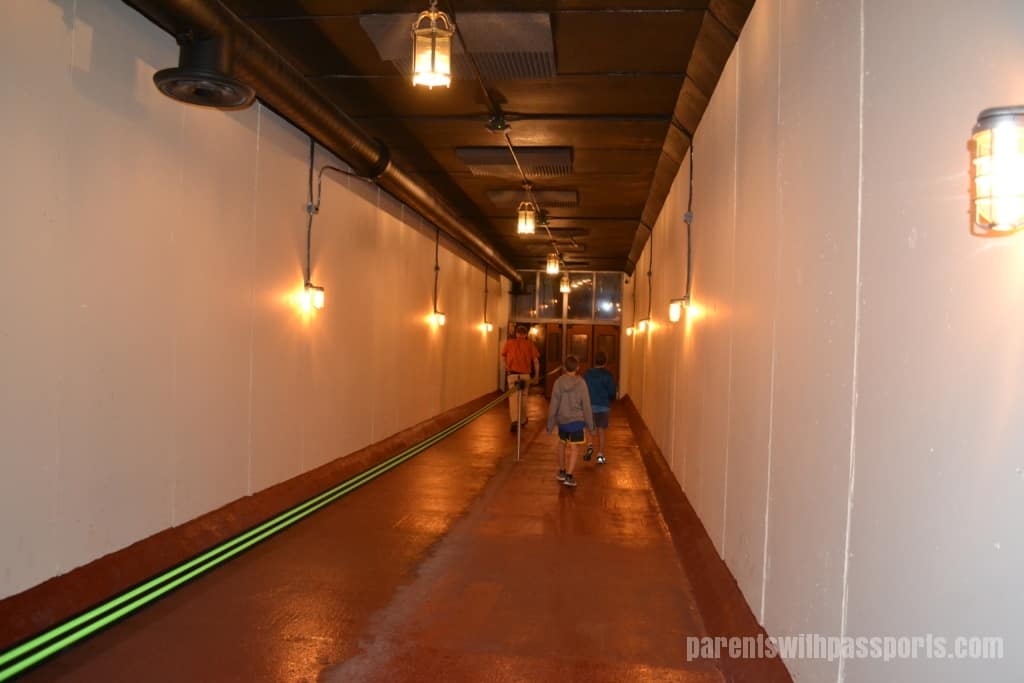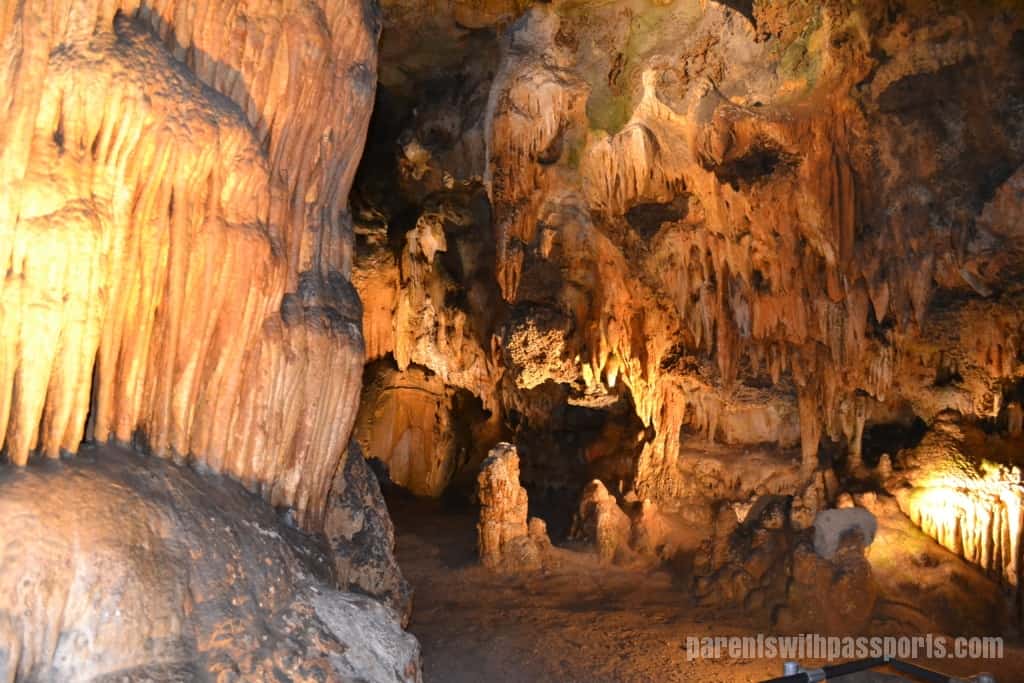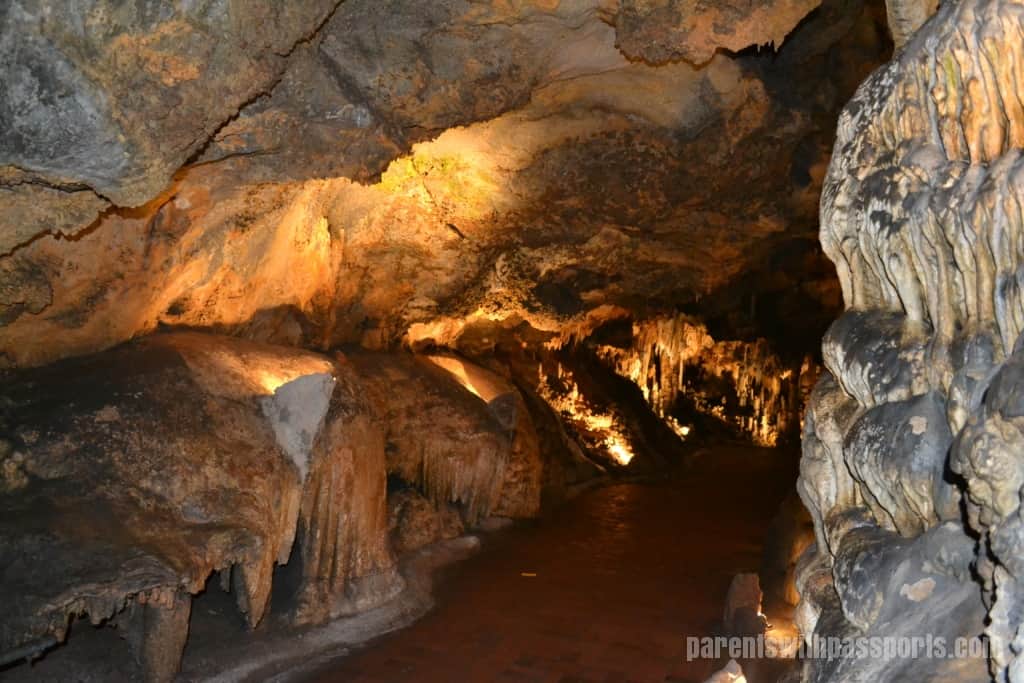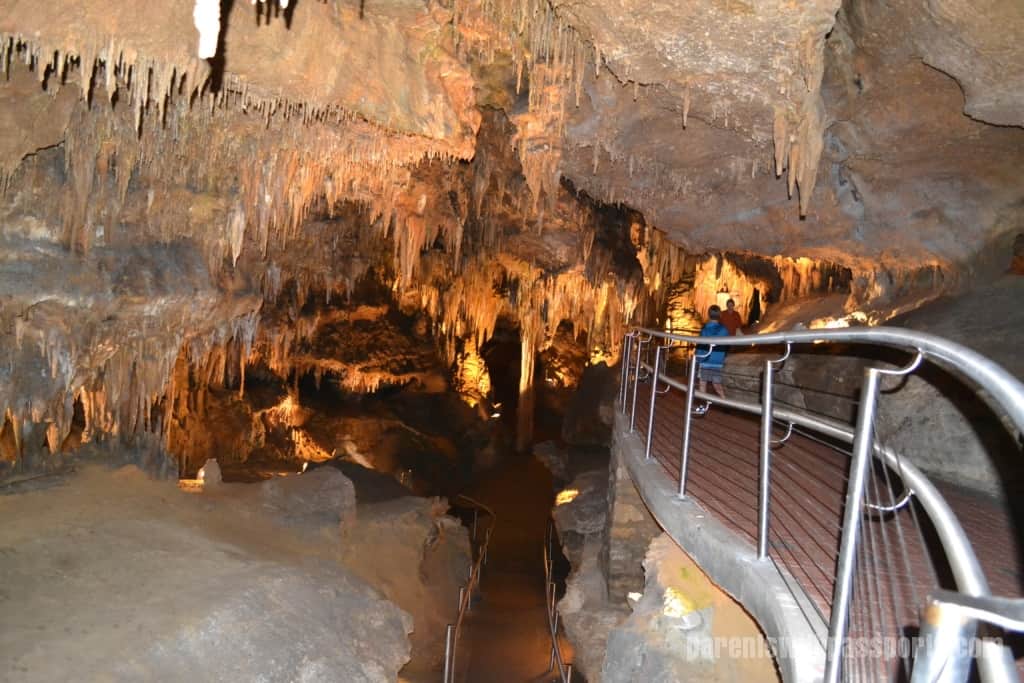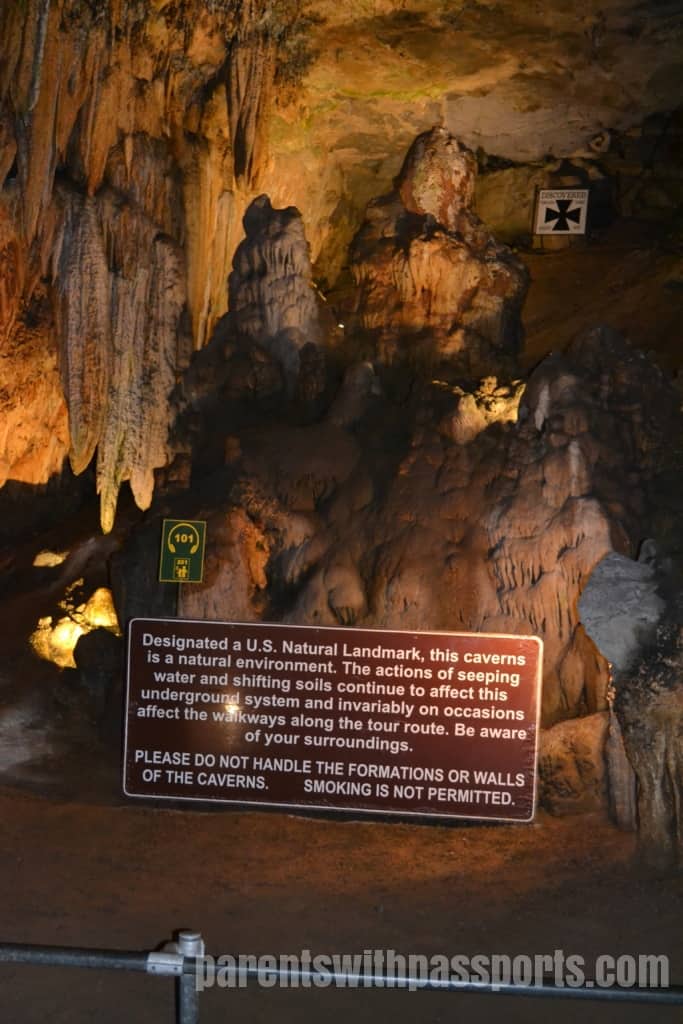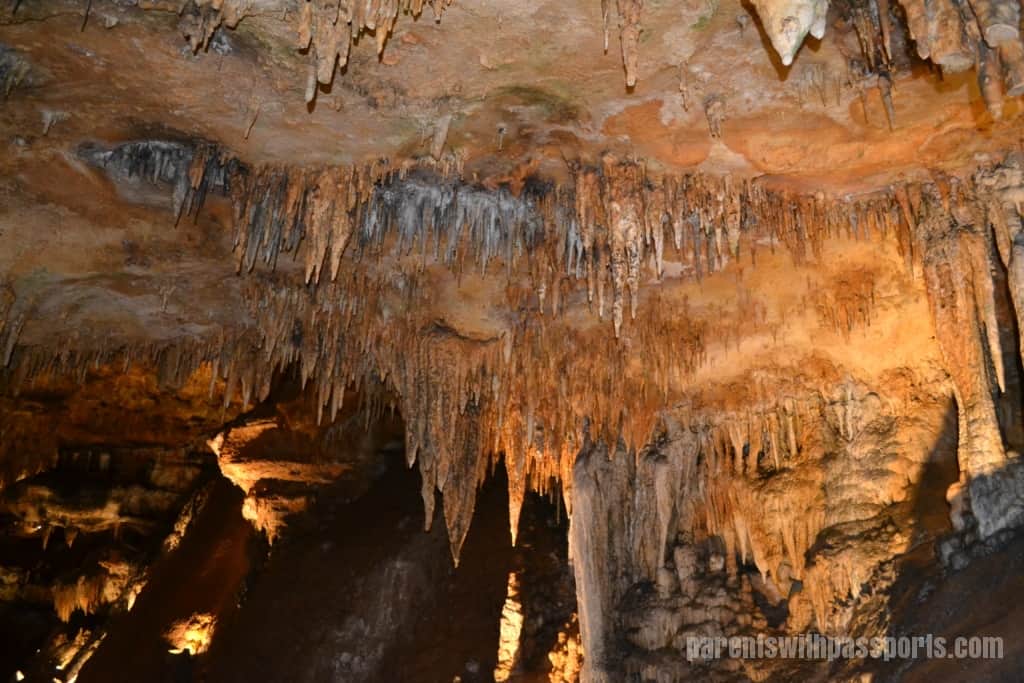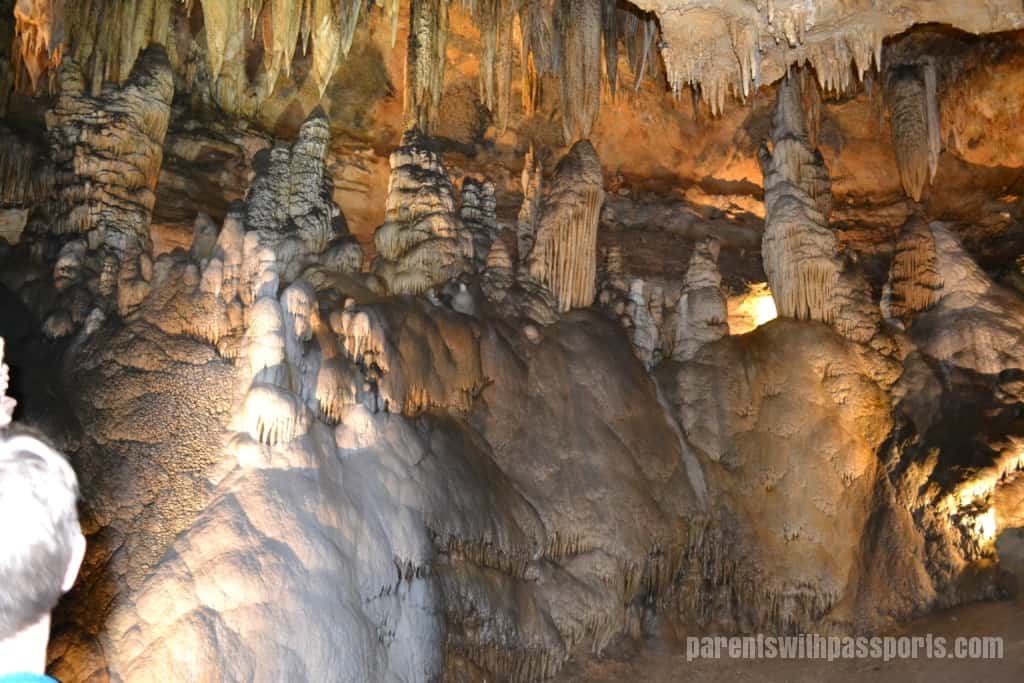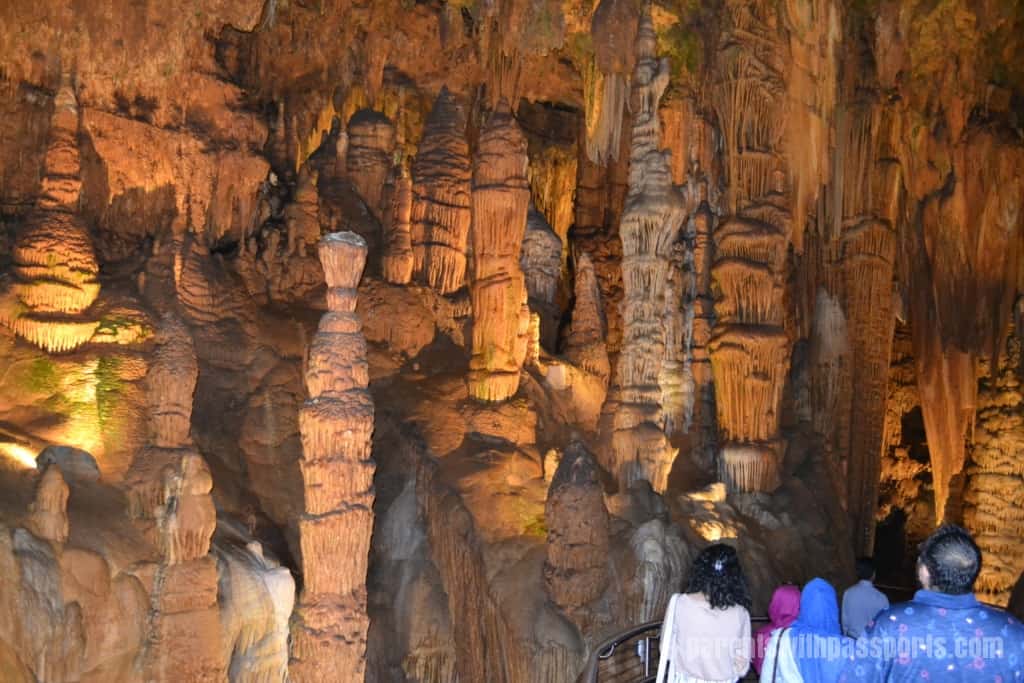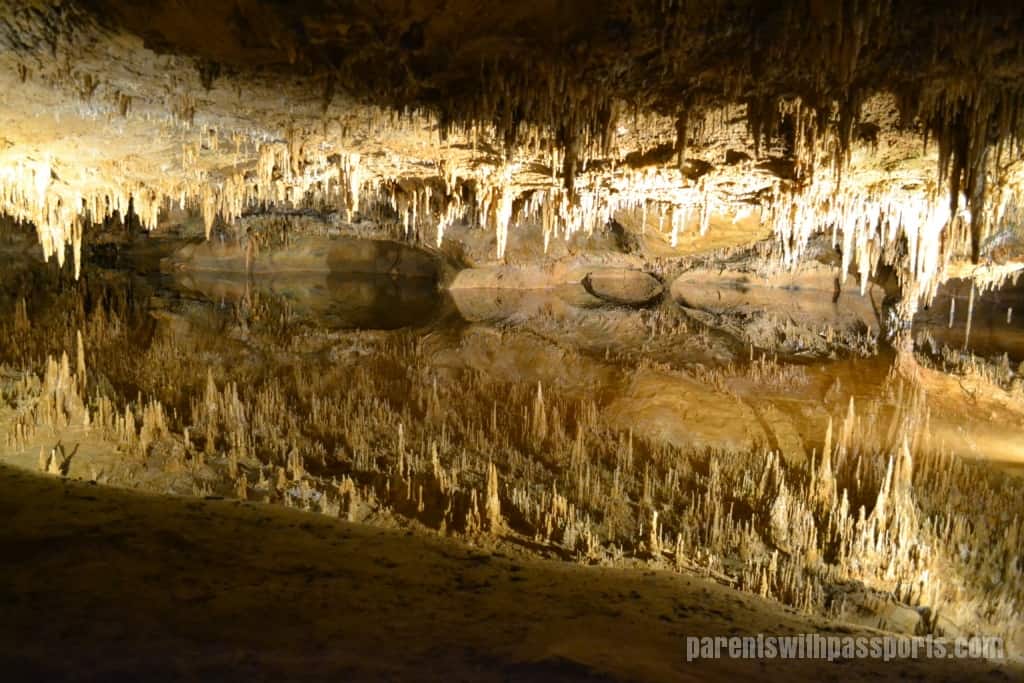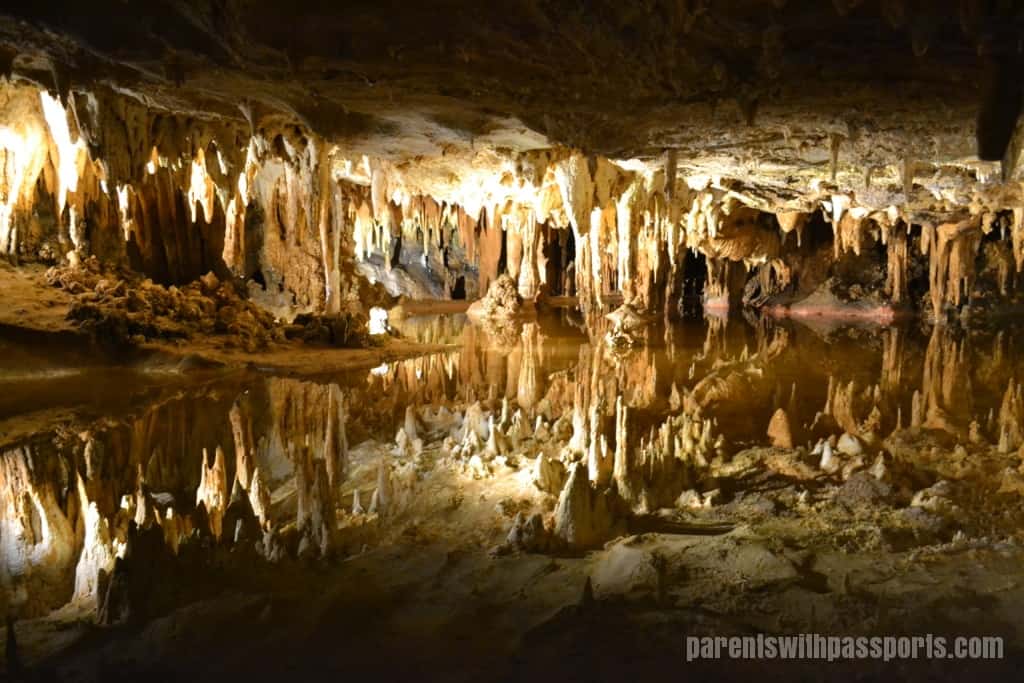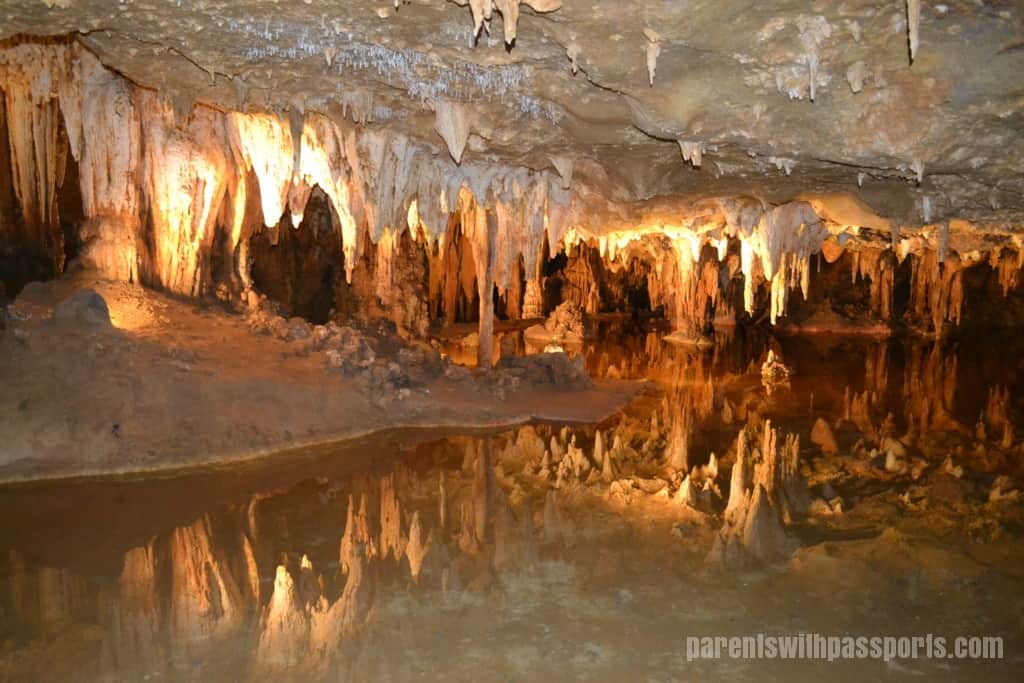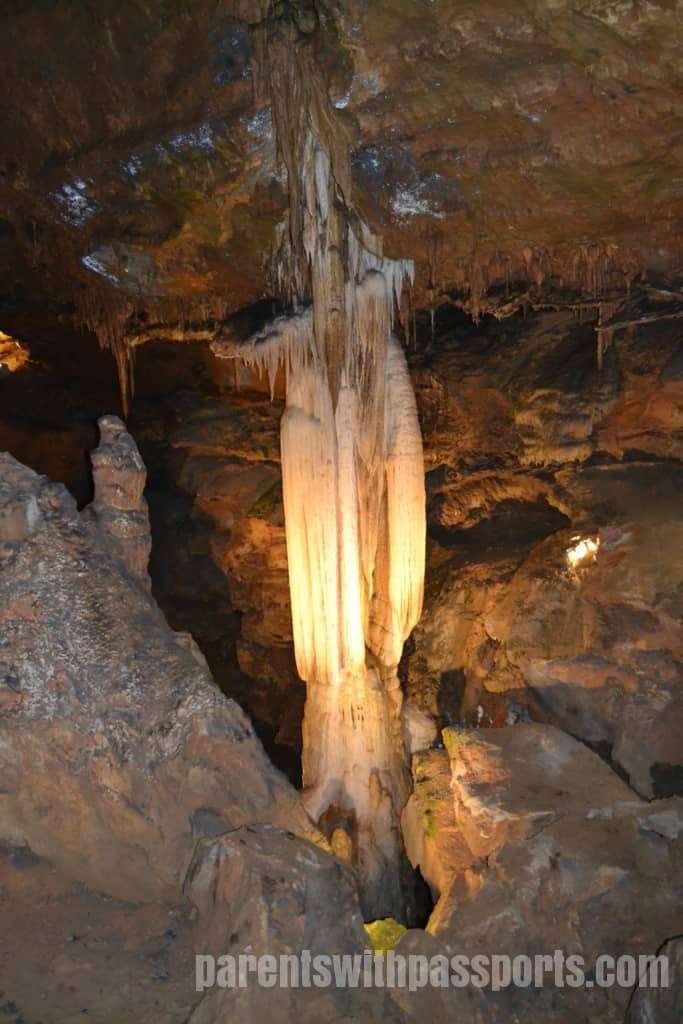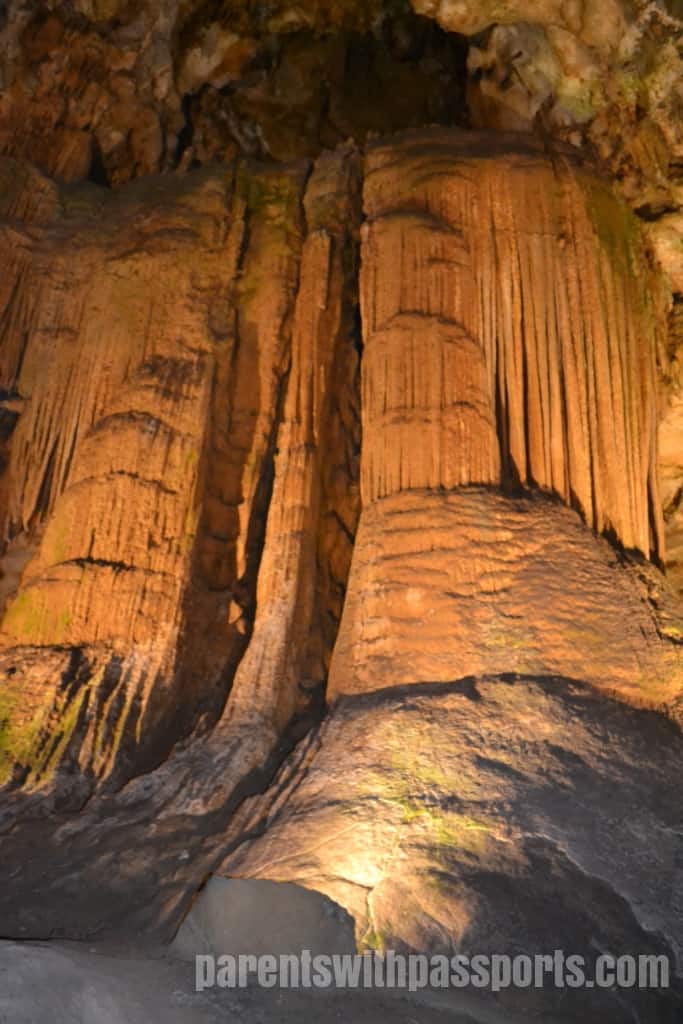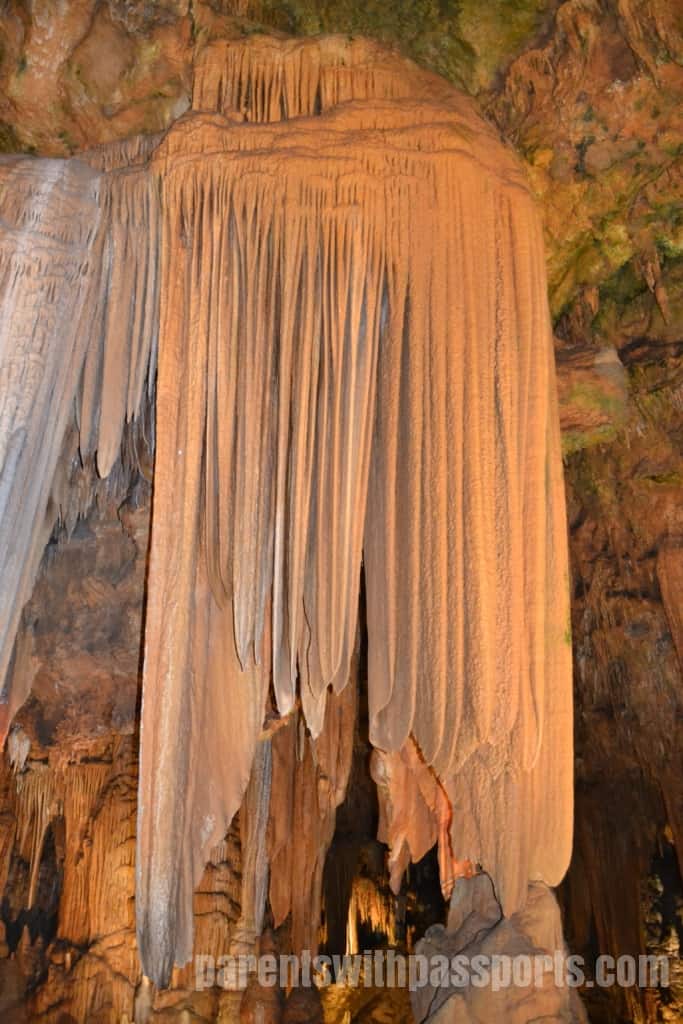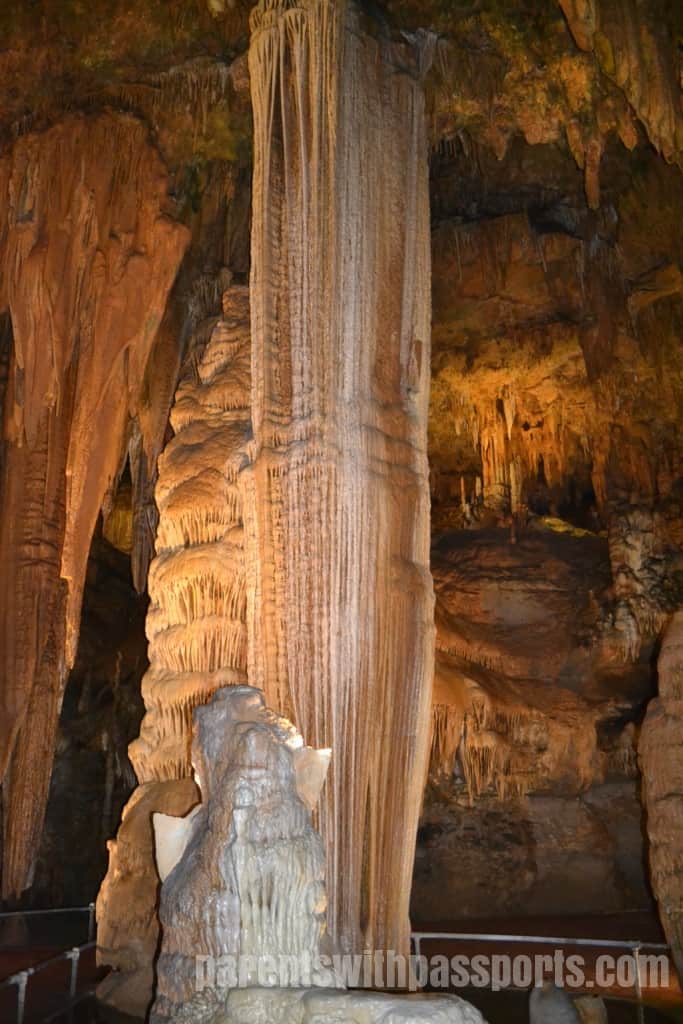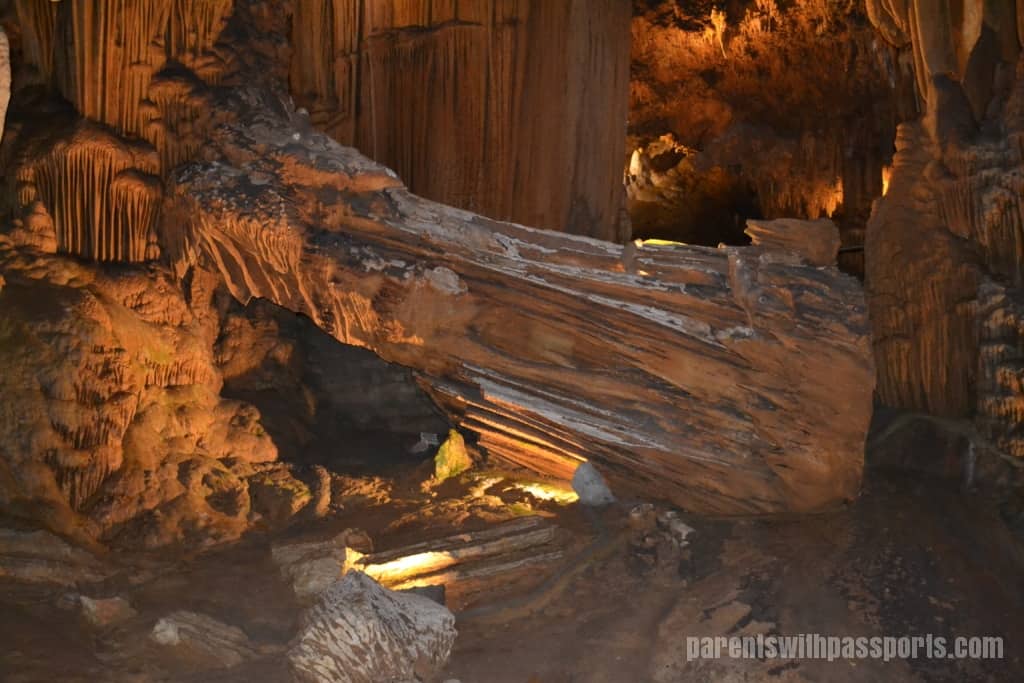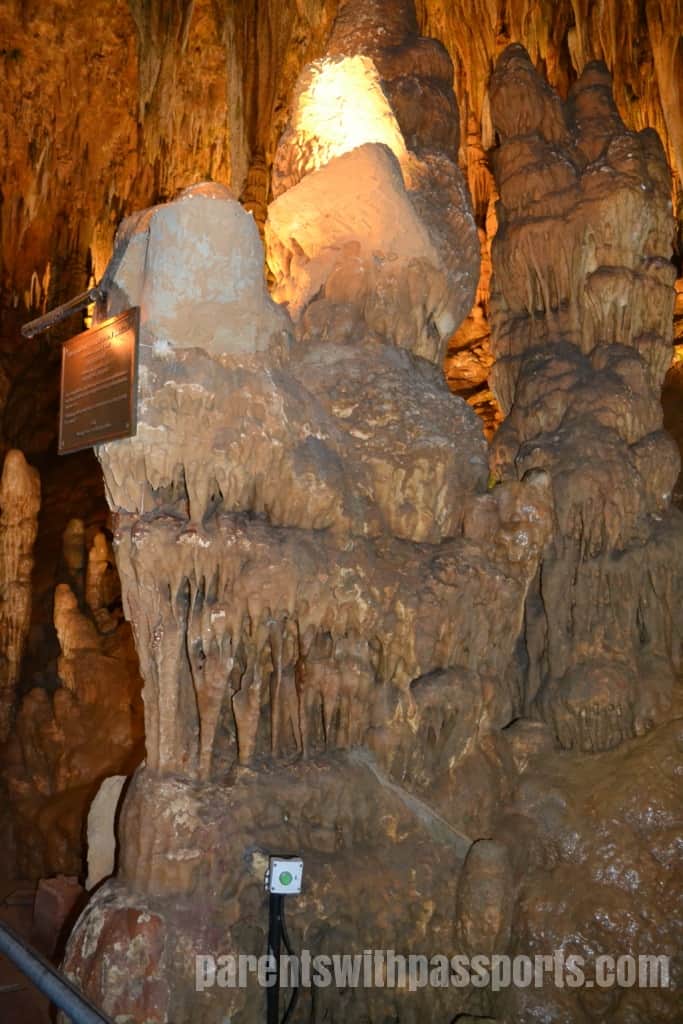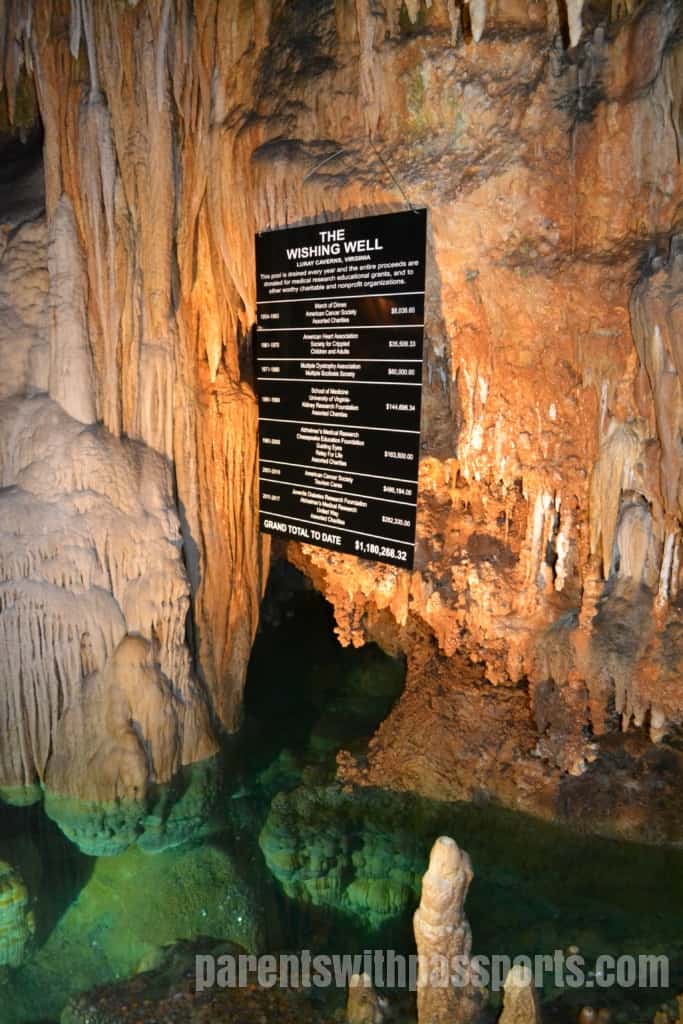“This is the coolest thing I’ve ever done.” RB, age 11 after leaving the Luray Caverns.
“Mom, can you please tip the tour guide because I asked him SO many questions.” Also RB, just before leaving the Luray Caverns.
As parents of growing travelers, there are many ways to rate the success of a trip. The smiles on your kids’ faces. The family memories made. The kids asking to go back again. But it’s hard to find a better indicator of a trip’s success than a statement like that. “This is the coolest thing I’ve ever done.” And it’s hard to find a better trip than one that piques your child’s curiosity, engages their mind, and elicits a sense of wonder. It was such a fantastic surprise that Luray Caverns did all those things for my boys.
Luray Caverns was one of the reasons I decided to take the western scenic route up I-81 between NC and NJ. I had stumbled across it in some travel readings and thought it looked amazing and like something my kids would love. When RB randomly grabbed a brochure for it from our DC hotel over spring break and also declared that it looked amazing, I knew we had to go. A save-the-best-for-last kind of kid, he asked me to save this stop for the trip home.
Our drive from NJ to Luray Caverns was unexpectedly long, due to some construction in Pennsylvania. We didn’t arrive until almost 6pm (2 hours after I had intended) and I was so worried that we wouldn’t be able to take a tour. Thankfully they stay open until 7pm in the summer and there was no line for the last few tours. We had to wait about 5 minutes for the start of the next tour and then we headed out with a group of about a dozen people.
The cave entrance is through the gift shop (as is the exit of course!) and we exited out the back of the building onto a long covered walkway. There were long rows of crowd control stanchions, which made me wonder if the line during the day reaches all the way back to the gift shop. If so, it would rival the wait for some Disney World rides. At the time I couldn’t imagine waiting that long to walk through a cave, but clearly we know now that it would be worth the wait.
We stopped about half way down the path to hear about the old house next to the walkway. Our guide told us that this house is on the site of the first air conditioned building in the country. Sitting on top of Cave Hill, the original building that stood there in the early 1900s was a sanatorium where tuberculosis patients were treated. (The sanatorium burned down in 1940 and the reception hall that is there today was built in its place.)
The founder of Luray Cavern Corporation, T.C. Northcott, believed that cave air was beneficial for those suffering from respiratory illnesses. He thus built the Limair Sanatorium to harness the healing power of the “lime air” from the cave below. Using a 5-foot diameter ventilation shaft drilled through 60 feet of rock, the house was connected to the cavern chamber below, and a fan powered by a 5 horsepower steam engine circulated the cave air throughout the house. The result was a building perfectly cooled to 70 degrees with air that had “perfect bacteriologic purity.”
We continued down the path to the cave entrance. The view from the path was gorgeous. With the Blue Ridge Mountains off in the distance, the pond and bell tower in Carillon Park provided a stunning view. The Lurray Singing Tower, or the Belle Brown Northcott Memorial, peeks out over the tree tops. The tower is a monument to T.C. Northcott’s wife and contains a carillon of 47 bells, which plays several recitals a week.
The path finally leads you to the entrance to the “Beautiful Caverns of Luray, VA”. The doors lead to a sloped hallway that leads down to the actual entrance to the cave. You can immediately feel the cooler air when you step into the hallway. The air inside the caverns is a naturally constant 54 degrees (with a “feels like” temperature of 65 due to the humidity).
We were immediately taken aback by the inside of the caverns. I had no idea what to expect but I was simultaneously amazed by the natural beauty and the development of the caverns. Stunning stalagmites and stalactites surrounded you on all sides. A perfectly maintained brick path with hand rails led deep into the caverns, and perfectly placed lights beautifully illuminated the formations. My initial impression was that they had somehow managed to fully commercialize the place while maintaining its natural state, a balance that is extremely difficult to achieve. They claim that no formations were touched or moved during development and the path was created following the natural flow and openings of the caverns.
Just inside the cave, our guide told us the story of Benton Stebbins and his dream of finding a cavern, turning it into a tourist attraction, and making a fortune. He and two friends searched for caves in the area for a month in the summer of 1878 before finally feeling a cool breeze coming through some loose rock in the hillside. They spent the day digging to make a hole big enough for a man and squeezed through to discover the amazing Luray Caverns. In the photo below, the cross marks the spot where the discoverers originally entered the cave.
Our guide explained to us the different between stalactites and stalagmites. Stalactites are the rock formations that hang from the ceiling, while stalagmites rise from the floor. (Stalactites hold “tight” to the ceiling and stalagmites “might” touch the ceiling.) They are both formed by calcium salts from dripping water. Stalagmites are often found directly underneath stalactites; the water dripping down from the stalactites accumulates on the ground and forms stalagmites. When the two meet (which can take hundreds of thousands of years), they are called a pillar.
The overall beauty of the stalagmites and stalactites certainly would have been enough, but there are several standout features of the cave that our guide pointed out. The first is the most stunning, and pictures don’t do it justice. Dream Lake is a shallow body of water (only 18-20 inches deep at its deepest point) in the cavern that perfectly reflects the stalactites that hang above it. It is almost an optical illusion; the reflection is so clear that it appears to be stalagmites growing out of the ground deep below the surface. It is truly unlike anything I have ever seen before.
One of the most famous rock formations inside the cavern is known as Pluto’s Ghost. Visible from several different points in the cavern, the cave’s discoverers, with only candles to light their way, thought that the white pillar was a ghost following them. Named after the Roman God of the underworld, Pluto’s Ghost is now well lit for tour purposes, but you can easily see how it could be a frightening apparition in the near dark.
The oldest formation in the cave is known as the Giant Redwood Tree. This flowstone formation is 40 feet tall and 120 feet around and is over 7 million years old.
Saracen’s Tent is a gorgeous flowstone drapery structure. Made of white calcite, the stalactite formation has been named one of the most perfectly formed flowstone draperies in the world.
Giant’s Hall is a room filled with towering columns, the largest of which stands at 47 feet tall.
In case you are worried about the structural integrity of the massive rock formations hanging from the ceiling, you need not be. We saw a massive stalactite that had fallen to the ground some 7,000 years ago. It is the most recently fallen stalactite; nothing in the cave has fallen since.
At one point towards the end of the tour, we stopped in a secluded section of the cave and our guide turned out the lights so that we could experience complete darkness. Everyone naturally fell silent as we sat in total darkness, unable to see our hands in front of our faces. It was a neat, if slightly unnerving, experience.
One of the most famous features of the caverns is the Great Stalacpipe Organ. Claiming the title of the world’s largest musical instrument, the organ makes music by tapping stalactites throughout the cave. Invented and constructed by Leland Sprinkle in the late 1950s, it is truly a unique instrument. He spent 2 years finding individual stalactites with just the right pitch for each note, and they are spread out over 3.5 acres in the cave. Each note on the organ sends a signal through a wire to a coiled rubber hammer, which strikes the stalactite. The instrument can be played by pressing the notes on the organ console or by pushing an inconspicuous green button off to the side. Our tour guide let my boys push the button to start the mini-concert for our group.
I have to admit that I have mixed feelings about the organ. It is hard not to be impressed by the ingenuity behind the idea and the engineering genius that it took to execute it. The sound it creates as it bounces off the cavern walls is both beautiful and slightly eery. But it is also hard not to look at it as a gimmick, a form of commercialization to lure in more tourists. They stress over and over again on the tour that it is harmful – even illegal – to touch the stalagmites and stalactites in the cave because it does irreparable damage to them. Human touch stops them from growing. Yet they allowed someone to spend two years crawling all over the cave, hitting stalactites with rubber mallets to hear their sound, and then ultimately sanding them down and hooking up wires and hammers to them. It feels like a blatant case of commercialization being prioritized over preservation.
The final stop on the tour was the Wishing Well. Since the 1950s, tourists have been allowed to throw coins into this 6 foot deep pool. Once a year, the cavern cleans out its contents and donates it to charity. Again, this man-made attraction feels a little out of place in such a naturally beautiful site. The water has turned green from the copper pennies that sit at the bottom of the pool, a sure sign that man has interfered with nature. At least in this case, it is for a good cause – over $1 million has been donated to charity so far.
Privately owned and operated, the Luray Caverns is a “show cave” and its primary purpose is to make money. But despite the obvious signs of commercialization, this cavern truly is a natural wonder that is well cared for. The tours run like a well-oiled machine – staggered perfectly so you rarely see another group and feel like the only ones in the cave. Our young tour guide clearly knew his stuff (and was tested thoroughly by our oldest son) and enjoyed his job. The site is very well maintained and while the commercial gimmicks of the 1950s are still in place, nothing new like that has been added to the inside of the cavern at least since it achieved national landmark status in 1978. (There are, however, plenty of new attractions outside the caverns – The Car & Carriage Caravan Museum, Luray Valley Museum, and Toy Town Junction are all located on the property and included in your ticket.)
The commercialized parts of the cavern did not detract from our experience at all. If anything it was the opposite for the kids at least. They loved them, and I looked at them more as an oddity than anything else. But none of that takes away from the wow factor you experience when you first walk into that cave. It is truly a stunning sight and there always seemed to be something even more amazing right around the corner. Photos don’t do it justice. You really have to see it with your own eyes to appreciate it. I know my kids did. Our visit to Luray Caverns is something they will never forget.
